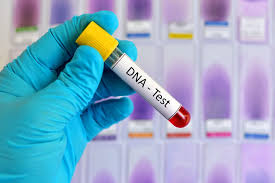Paternity testing is quite significant at times to identify your biological relations, specifically in legal matters. A number of individuals undergo such testing procedures for personal reasons as well as for legal concerns. According to recent studies, it has been revealed that approximately 300,000 paternity tests are performed in the US each year. Most of these tests are ordered by the court to prove paternity. In order to resolve your legal issues related to paternity and child concern, you must go for a legal paternity test. In this blog, we will discuss the purpose and process of legal paternity testing. You will also get information about the significant implications of such tests.
Usually, legal paternity tests are carried out to identify the real father of an unborn child. In other words, it is done to identify the biological relations between the father and the children. Mostly the court orders such tests to resolve different legal issues including child custody, child support, and inheritance claims Some specific labs are approved to undergo such tests. These labs such as Choice DNA undergo strict chain-of-custody procedures to prove paternity. Choice DNA is known to provide 99% accurate results with clarity and authenticity.
Purpose of Legal Paternity Test
The legal paternity test is done to provide evidence for biological relationships between the child and the potential father. The information gathered from such tests may include:
-
Courts order such tests to determine paternity and resolve issues related to child support and custody arrangements.
-
It is also done to provide inheritance rights to the children from the potential father.
-
Confirmation of paternity can affect the rights of biological parents, so legal paternity tests are done in case of adoption.
-
In the case of immigration, individuals have to provide evidence of their biological relations with the family members.
Process of a Legal Paternity Test
Following are some of the steps involved in the process of legal paternity testing:
-
Choosing a Reputable Testing Facility:
You must choose a reputable and well-known lab to conduct a paternity test for you. Choice DNA testing is one of the best labs that provides the most accurate and authentic results.
-
Sample Collection:
In the case of NIPP testing, you must collect cheek swab samples of the potential father and a blood sample of the fetus. It is known that the DNA of the fetus is found in the bloodstream of the mother. If you need complete privacy while collecting samples, you can order home test kits to collect the samples at home.
-
Chain of Custody Regulations:
After the samples have been collected and submitted to the respective lab, some chain of custody regulations must be considered. Choice DNA follows strict guidelines to deliver the most accurate results without any doubts.
-
DNA Analysis:
The samples are analyzed in the laboratory and the results are interpreted under strict conditions. The analysis is done by focusing on specific genetic markers and determining the likelihood of paternity with high accuracy.
-
Reporting Results:
Once the analysis is done, the results are compiled in a report. This report can be used in legal proceedings in the court. The report consists of all the information including familial relations, ancestral history, and paternity expressed in percentage.
Implications of Legal Paternity Tests
The results of a legal paternity test might have some following implications:
-
Legal implications may include issues related to child support, child custody, and inheritance rights. All these issues can be resolved with accurate testing methods utilized in the labs.
-
The financial responsibilities can be affected. The biological father of the child will be alleged to provide financial support to the child and provide all rights for inheritance.
-
The knowledge of biological relationships can influence family dynamics and personal identities.

